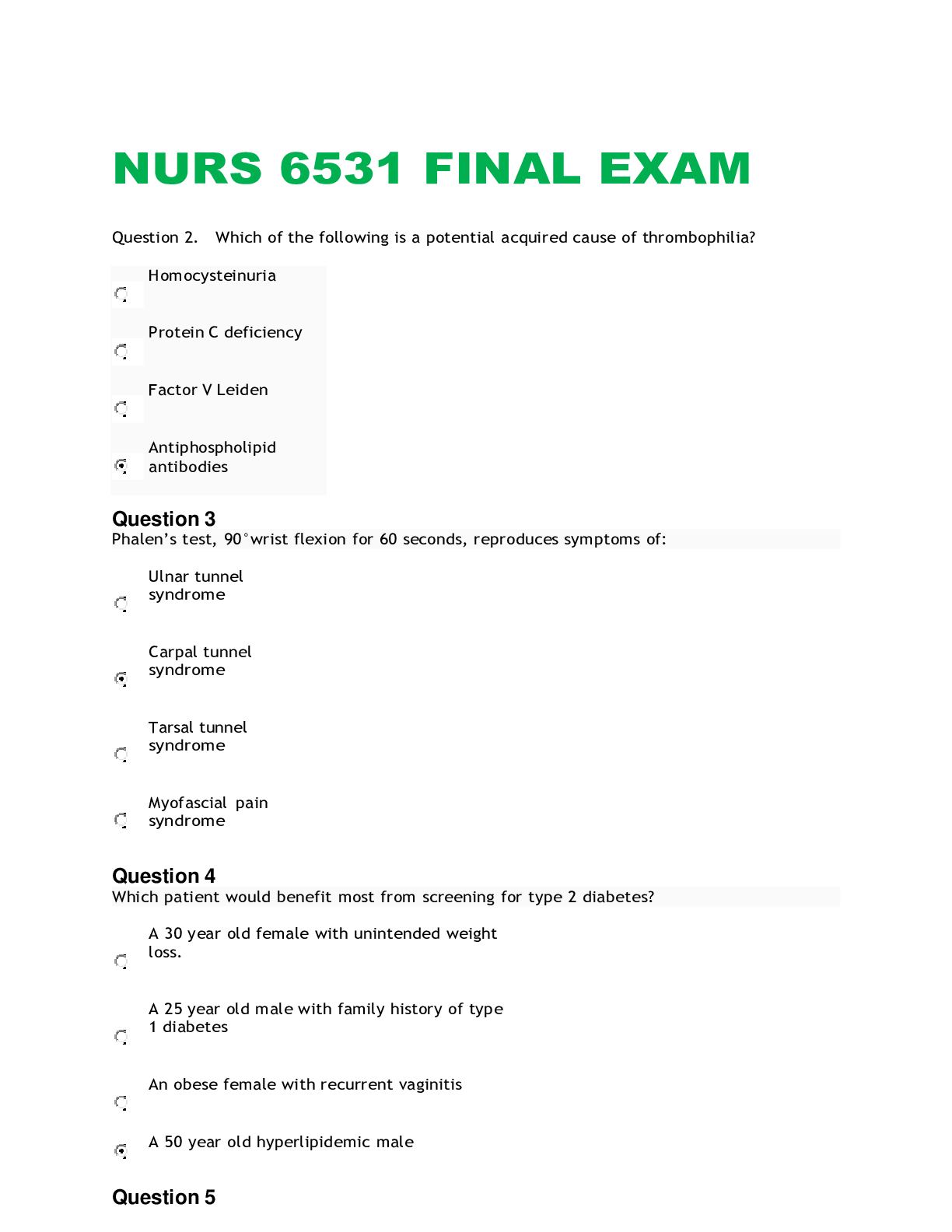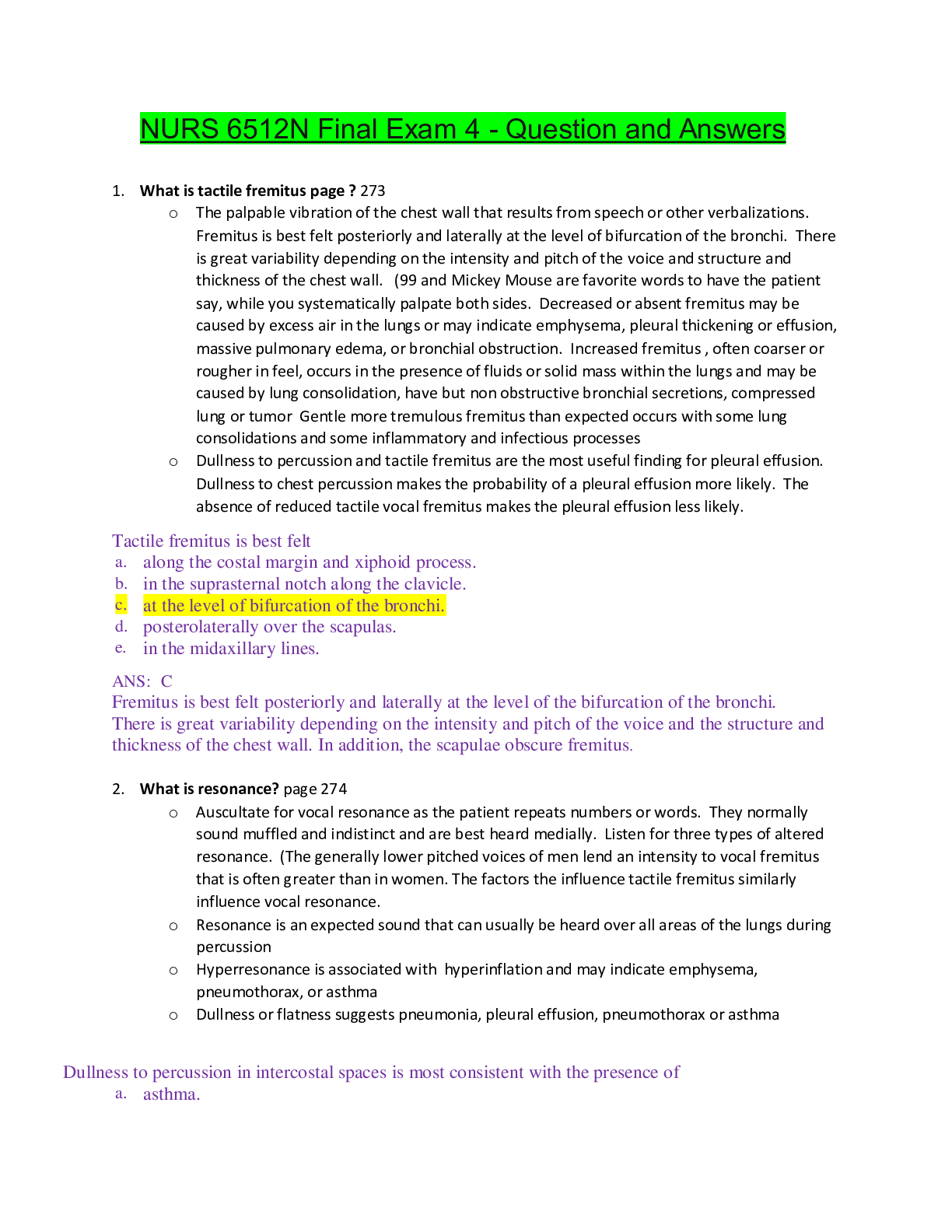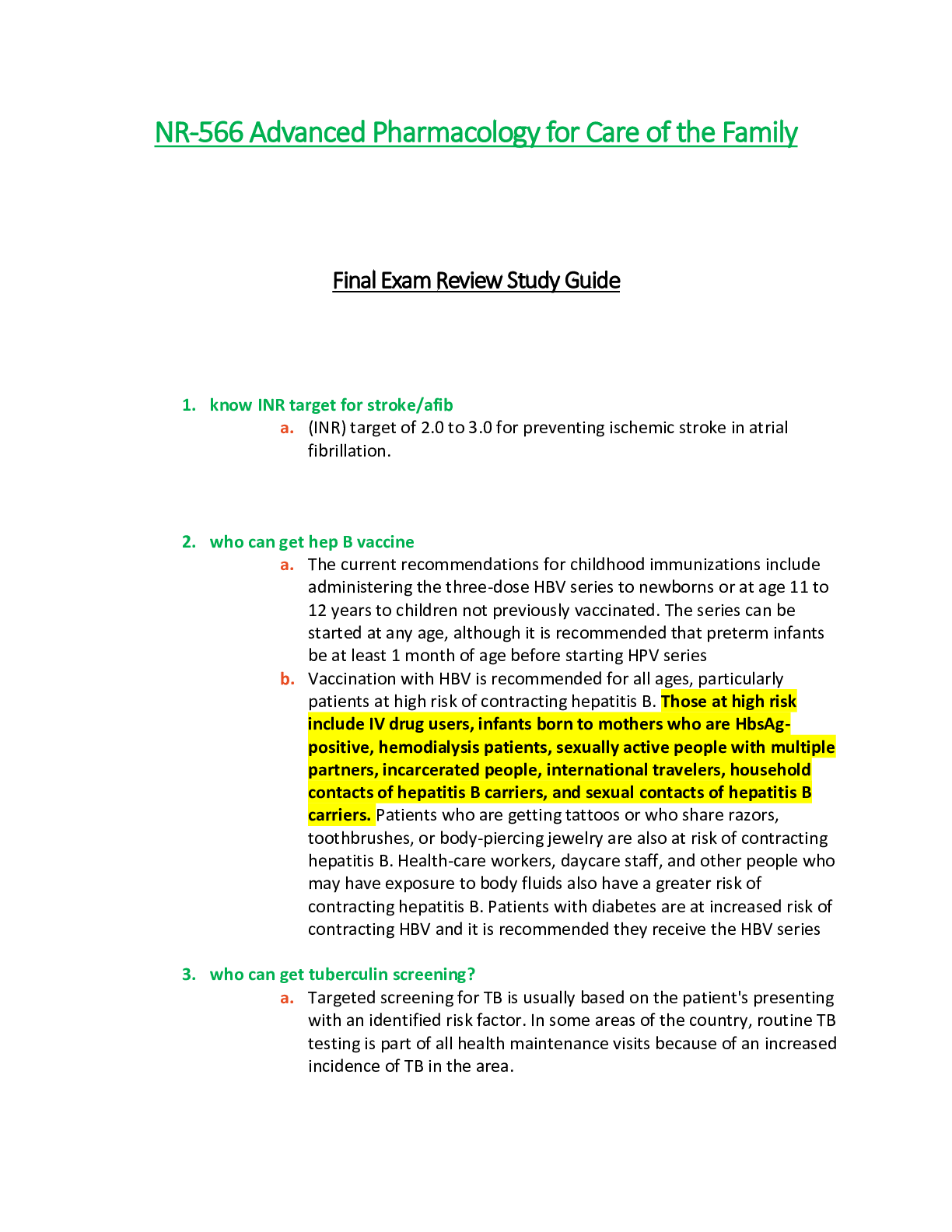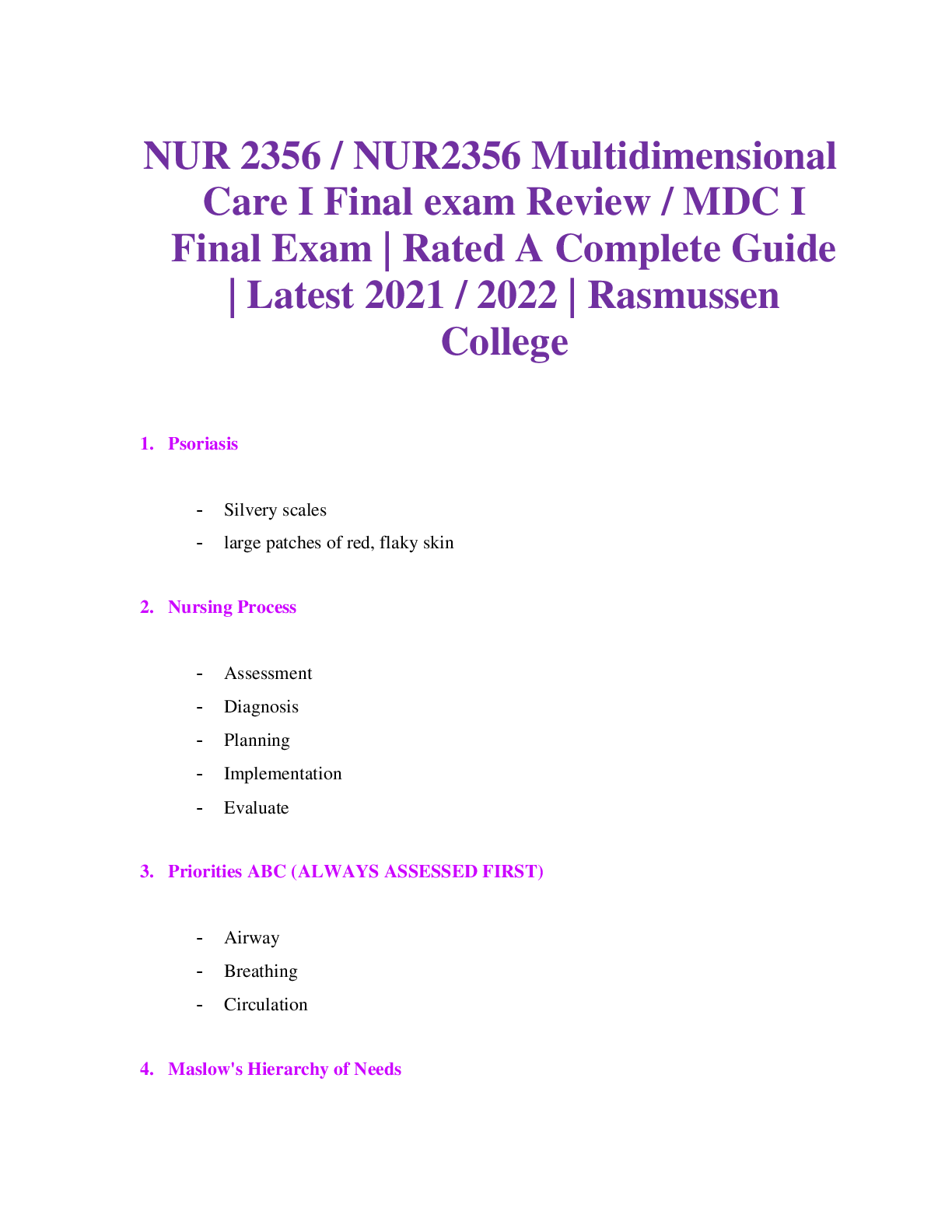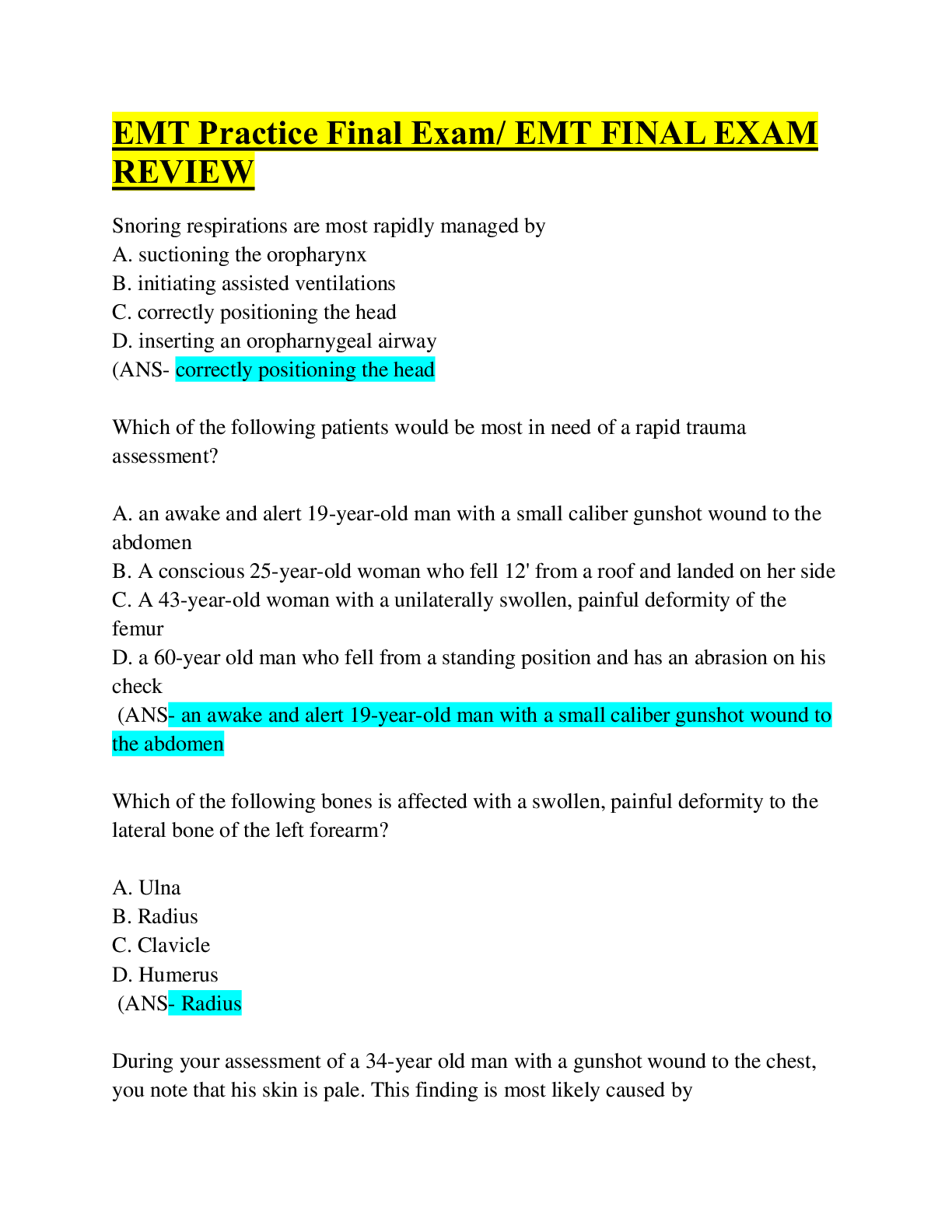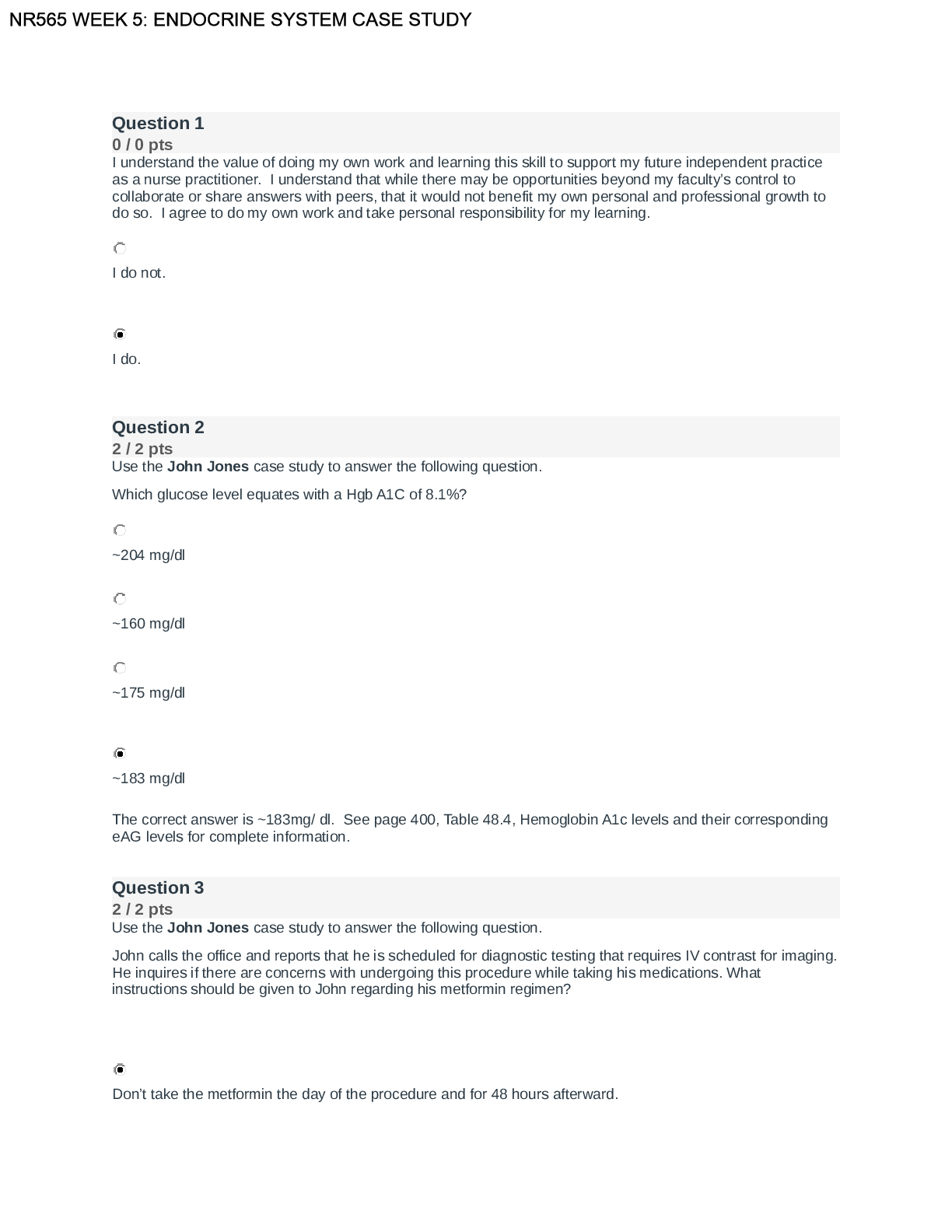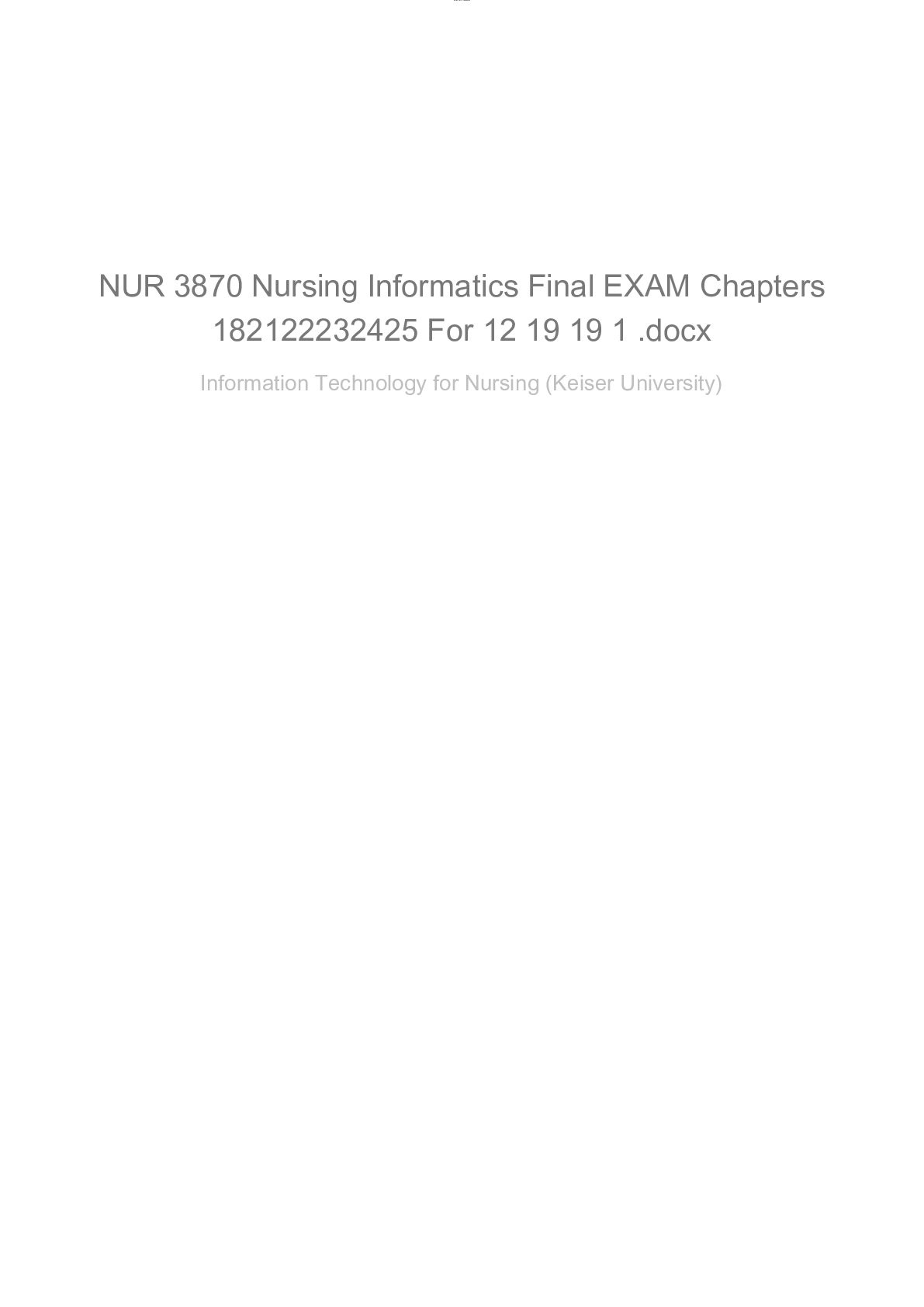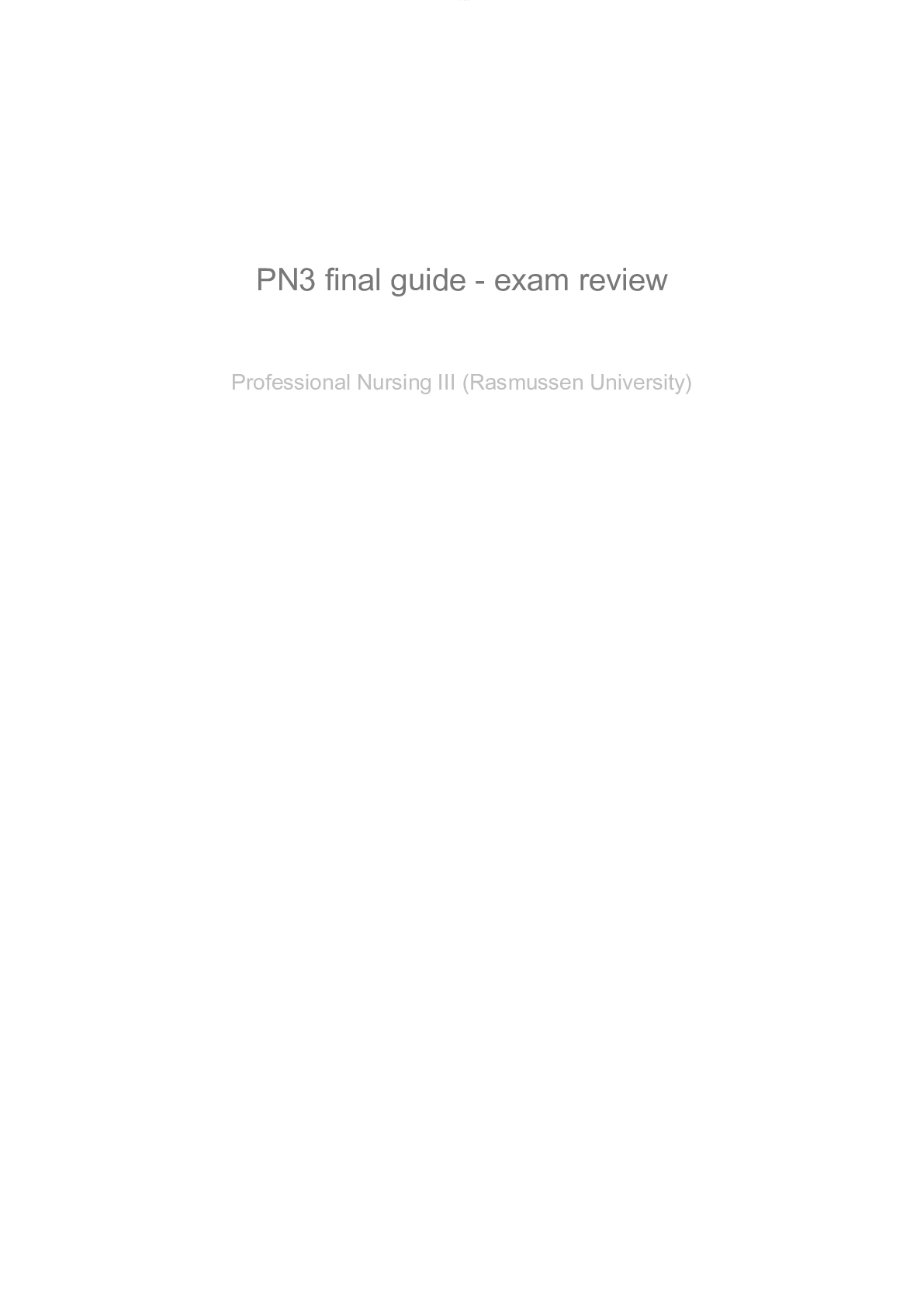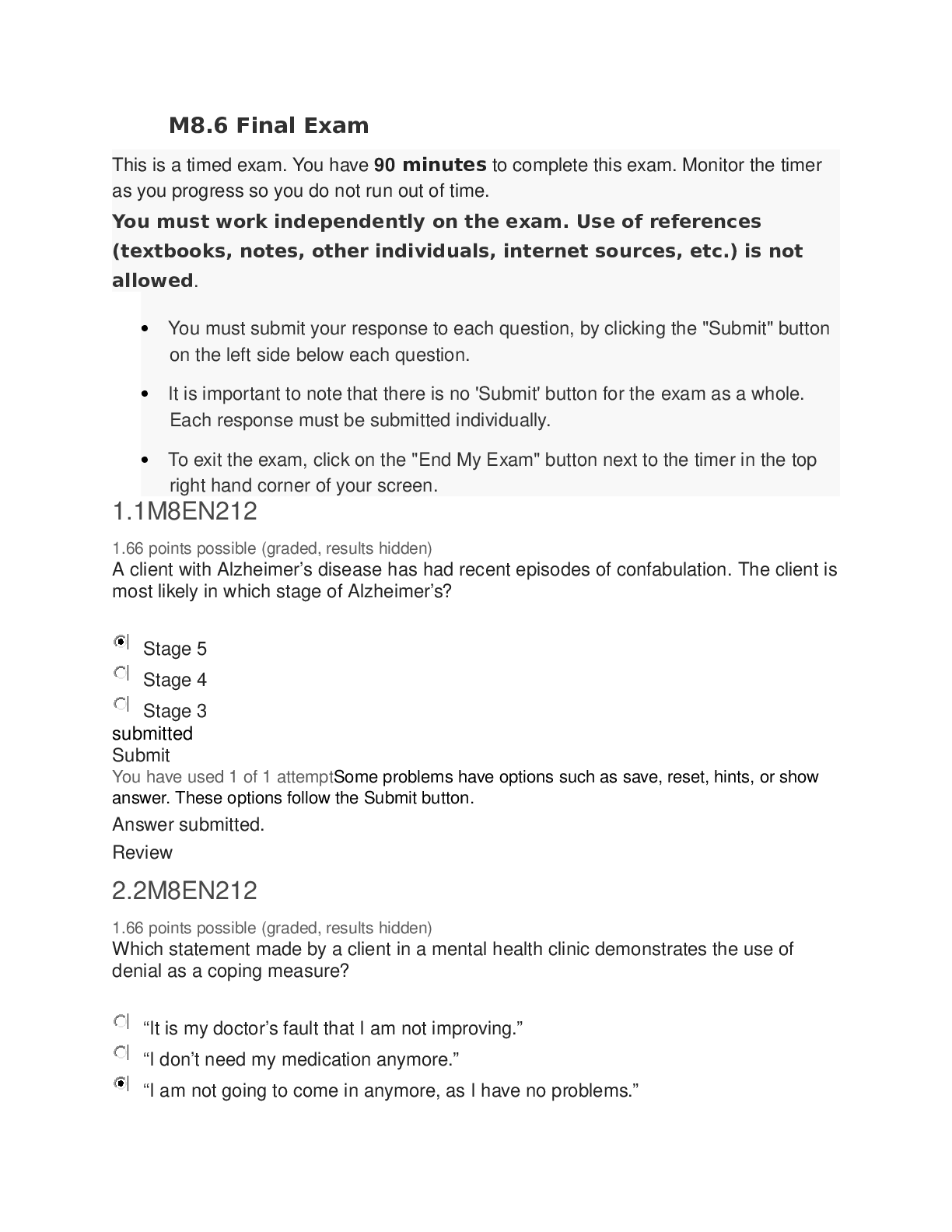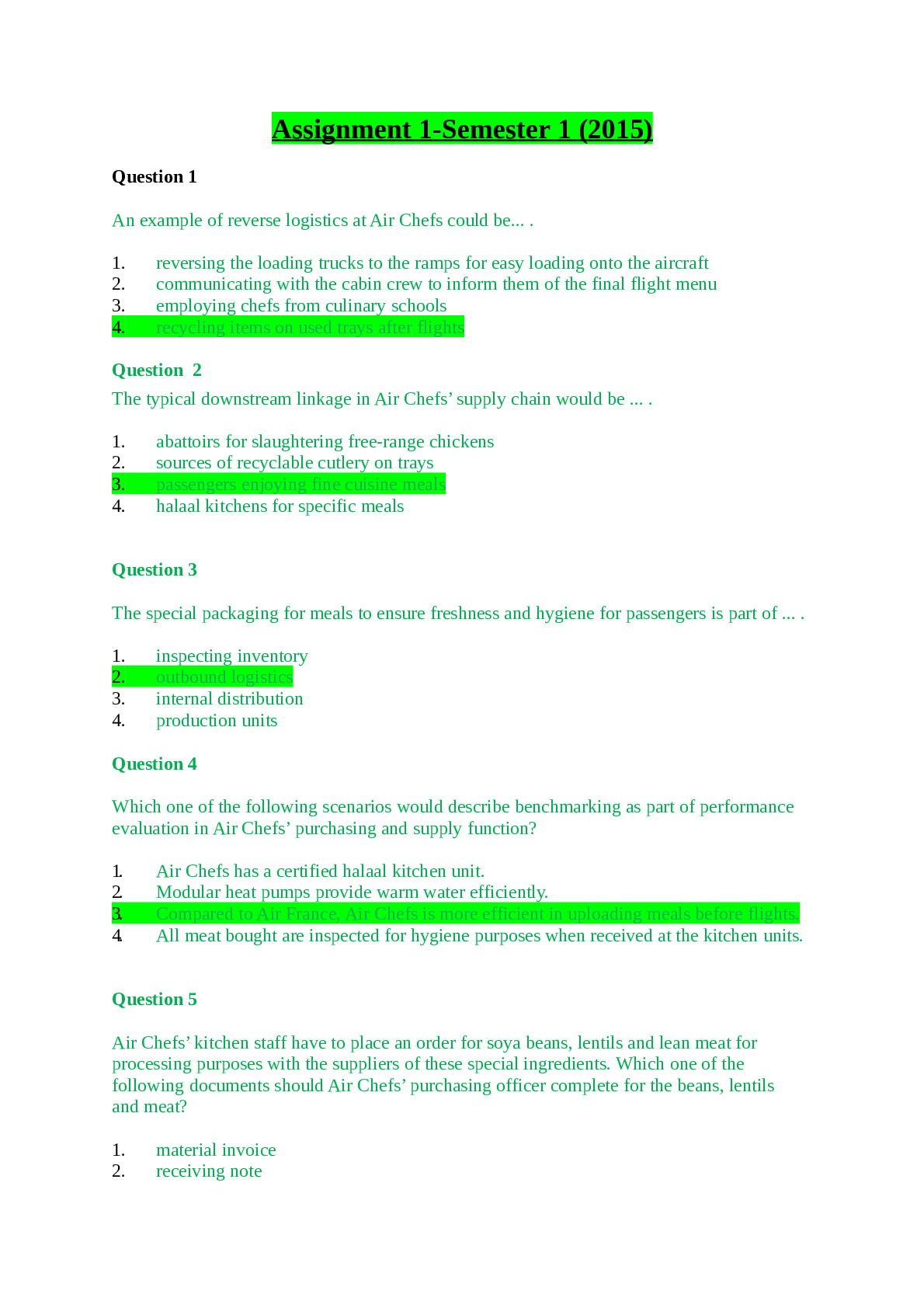Pathophysiology > Final Exam Review > Cardiology: Pathophysiology Final Exam 6. 75 Questions and Answers (All)
Cardiology: Pathophysiology Final Exam 6. 75 Questions and Answers
Document Content and Description Below
Cardiology: Pathophysiology Exam 6. 75 Questions and Answers Which of the following actions causes the atrioventricular (AV) valves to close? When stroke volume decreases, which of the following... could maintain cardiac output? Which of the following describes the pericardial cavity? Which of the following factors greatly improves venous return to the heart during strenuous exercise? The function of the baroreceptors is to: The normal delay in conduction through the AV node is essential for: Which of the following is a result of increased secretion of epinephrine? Which of the following causes increased heart rate? The event that causes the QRS wave on an electrocardiogram (ECG) tracing is: The cardiac reserve is: The term preload refers to: The first arteries to branch off the aorta are the: Cardiac output refers to: Vasodilation in the skin and viscera results directly from: A partial obstruction in a coronary artery will likely cause: Cigarette smoking is a risk factor in coronary artery disease because smoking: The term arteriosclerosis specifically refers to: A modifiable factor that increases the risk for atherosclerosis is: An atheroma develops from: Low-density lipoproteins (LDL): Factors that may precipitate an angina attack include all of the following EXCEPT: When comparing angina with myocardial infarction (MI), which statement is true? The basic pathophysiology of myocardial infarction is best described as: Typical early signs or symptoms of myocardial infarction include: The most common cause of a myocardial infarction is: Which of the following confirms the presence of a myocardial infarction? The size of the necrotic area resulting from myocardial infarction may be minimized by all of the following EXCEPT: The most common cause of death immediately following a myocardial infarction is: Why does ventricular fibrillation result in cardiac arrest? The term cardiac arrest refers to which of the following? Which change results from total heart block? The term premature ventricular contraction refers to the condition where: Which of the following is most likely to cause left-sided congestive heart failure? The definition of congestive heart failure is: Significant signs of right-sided congestive heart failure include: Paroxysmal nocturnal dyspnea is marked by: Compensation mechanisms for decreased cardiac output in cases of congestive heart failure include: In which blood vessels will failure of the left ventricle cause increased hydrostatic pressure? Which of the following drugs improves cardiac efficiency by slowing the heart rate and increasing the force of cardiac contractions? In an infant, the initial indication of congestive heart failure is often: A sign of aortic stenosis is: An incompetent mitral valve would cause: Common signs of rheumatic fever include all of the following EXCEPT: Rheumatic heart disease usually manifests in later years as: Which of the following applies to subacute infective endocarditis? Pericarditis may be caused by: A source of an embolus causing an obstruction in the brain could be the: The basic pathophysiological change associated with essential hypertension is: Uncontrolled hypertension is most likely to cause ischemia and loss of function in the: The term intermittent claudication refers to: A friction rub is associated with: The outcome for many aortic aneurysms is: Shock is defined as: Shock follows a myocardial infarction when: What are the early signs of circulatory shock? A compensation for shock would include: Why does anaphylactic shock cause severe hypoxia very quickly? A prolonged period of shock is likely to cause: Shock develops in patients with severe burns as a result of: The classic early manifestation(s) of left-sided congestive heart failure is/are ____, whereas the early indicator(s) of right-sided failure is/are _______. The cause of essential hypertension is considered to be: A cardiac pacemaker would most likely be inserted in cases of: Which of the following is considered to be the most dangerous arrhythmia? The most common factor predisposing to the development of varicose veins is: In the period immediately following a myocardial infarction, the manifestations of pallor and diaphoresis, rapid pulse, and anxiety result from: Septic shock differs from hypovolemic shock in that it is frequently manifested by: Heart block, in which a conduction delay at the AV node results in intermittent missed ventricular contractions, is called: A very rapid heart rate reduces cardiac output because: The right side of the heart would fail first in the case of: Which of the following compensations that develop in patients with congestive heart failure eventually increase the workload of the heart? Varicose ulcers may develop and be slow to heal because: Excessive fluid in the pericardial space causes: Aortic stenosis means the aortic valve: Septic shock is frequently caused by infections involving: [Show More]
Last updated: 1 year ago
Preview 1 out of 9 pages

Reviews( 0 )
Document information
Connected school, study & course
About the document
Uploaded On
May 07, 2022
Number of pages
9
Written in
Additional information
This document has been written for:
Uploaded
May 07, 2022
Downloads
0
Views
123

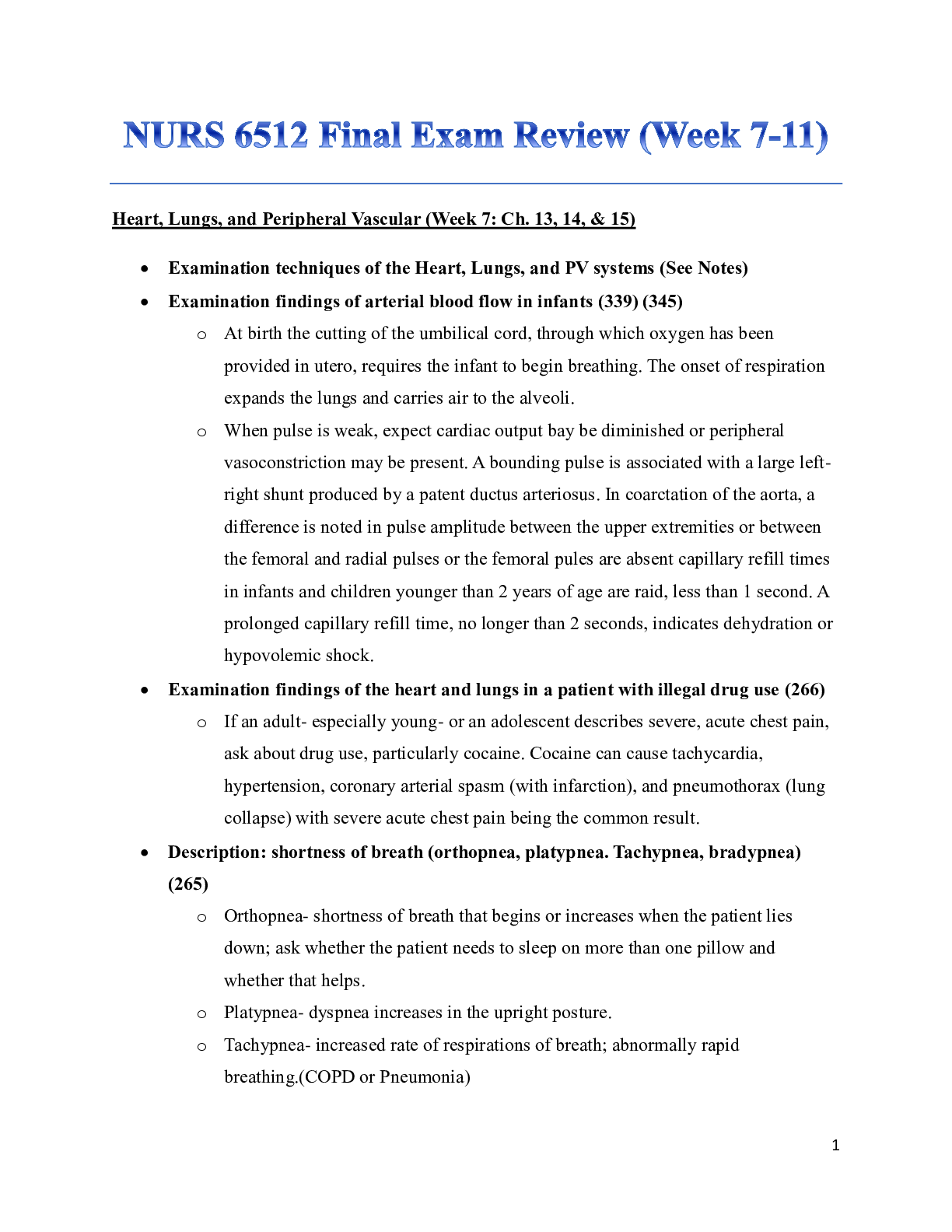

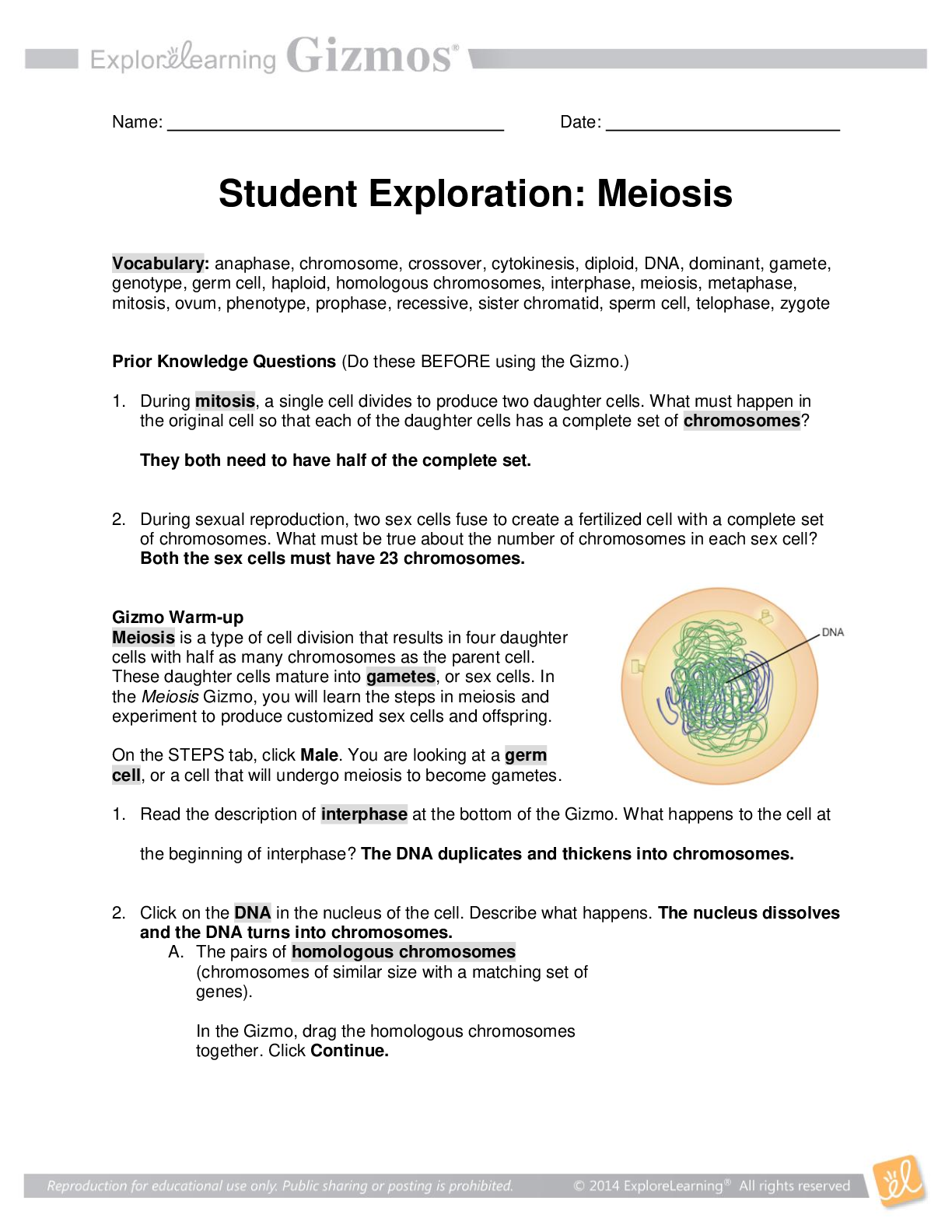


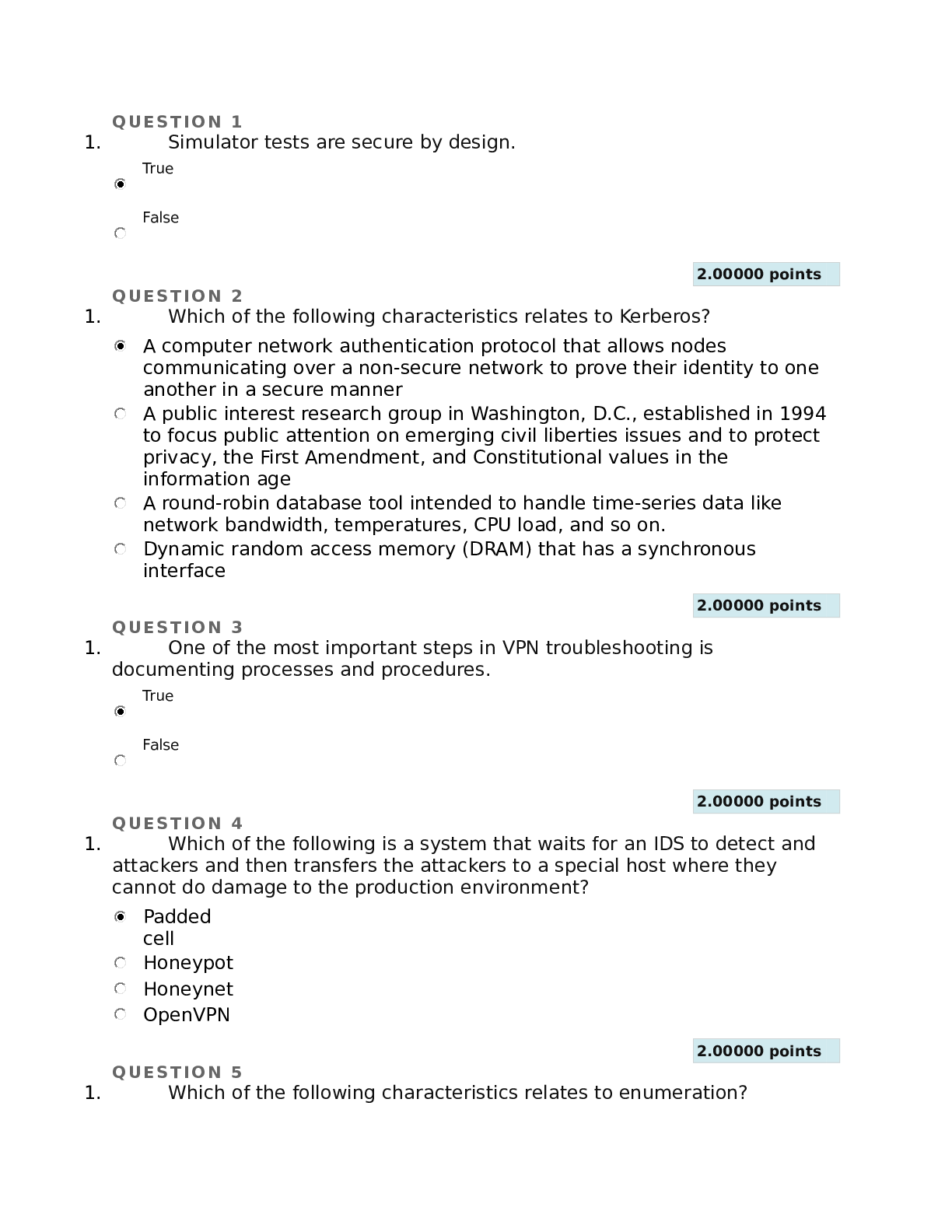


.png)

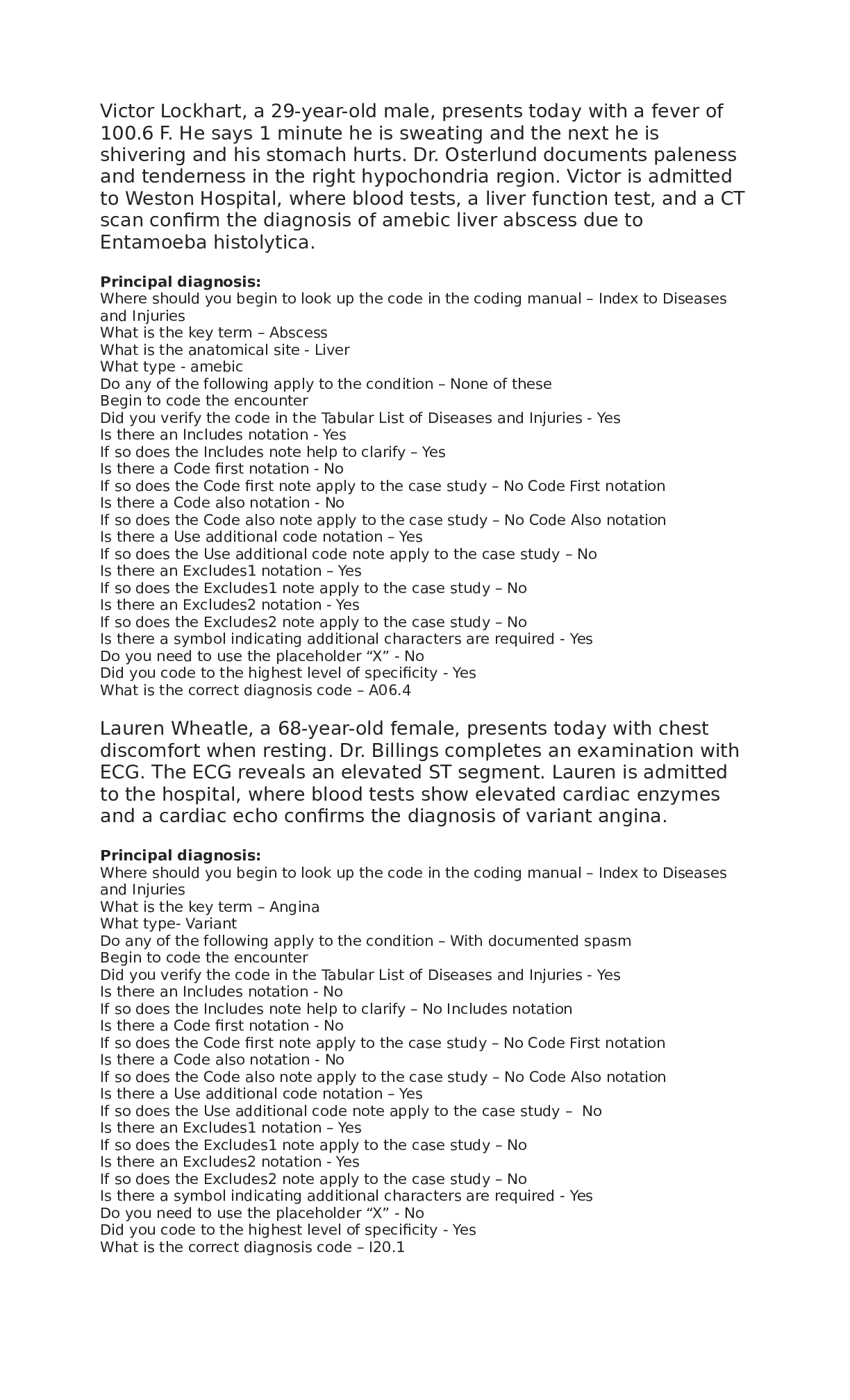


.png)
